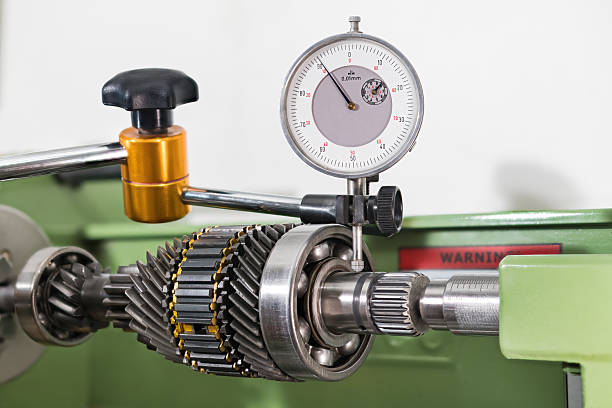High‑Accuracy Test Indicators in Lagos Nigeria Engineering Measurement
Discover precision dial test indicators in Lagos, Nigeria for accurate alignment and measurement in workshops.
Dial Test Indicator Buy Lagos Nigeria
What Is a Dial Test Indicator?
A dial test indicator is a precision measuring instrument used in engineering and metal‑working to check small deviations in alignment, flatness, or concentricity. It has a small probe (plunger) that touches a surface; as it moves, a dial gauge shows very fine displacement. Unlike a regular dial gauge, a test indicator is optimized for surface and alignment measurement rather than deep hole measurement.
Why a Dial Test Indicator Matters for Property & Real‑Estate Maintenance in Lagos
For real estate developers, facility maintenance teams, and property engineers in Lagos, a dial test indicator offers several key benefits:
-
Precision Fabrication: When building or maintaining metal components (railings, fittings, structural brackets), the indicator helps ensure alignment and accuracy, reducing rework.
-
Workshop Quality Control: In on-site or off-site maintenance workshops, teams can check the flatness and alignment of parts before installation.
-
Machining & Metalwork: For fabricators working on custom metalwork or trim, the indicator enables precise alignment of workpieces on machines like mills and lathes.
-
Durability & Safety: Ensuring parts are aligned correctly reduces stress, wear, and potential failure in structural or mechanical elements of property systems.
-
Professional Operation: Using high-precision tools like a dial test indicator signals a mature, competent maintenance or fabrication team.
Key Features to Look For When Buying a Dial Test Indicator in Lagos
-
Measuring Range & Resolution
-
A small measuring range (for example, ± 2 mm) is suitable for precision alignment.
-
Resolution (e.g., 0.01 mm or 0.001 in) determines how finely you can read the displacement.
-
-
Dial Size & Readability
-
A clear, well-marked dial makes it easier to read fine movements.
-
Luminescent or high-contrast markings aid visibility in workshop lighting.
-
-
Swivel or Stem Angle
-
Some indicators have adjustable stem angles, allowing you to position the probe optimally for different surfaces.
-
A rigid and stable stem improves measurement accuracy.
-
-
Contact Point / Probe Tip
-
Tungsten carbide or hardened steel tips provide durability and wear resistance.
-
Replaceable tips let you adapt to different material types or measure in various conditions.
-
-
Bezel and Graduation
-
A rotatable bezel helps reset the gauge for incremental measurements.
-
Fine graduations on the dial support accurate reading of displacement.
-
-
Build Quality & Durability
-
Robust metal housing resists shock and wear in workshop settings.
-
High-quality internal mechanism ensures long-term precision.
-
-
Mounting Options
-
Some indicators come with mounting stems or magnetic bases to fix them firmly in place.
-
Good compatibility with other metrology tools or machines increases versatility.
-
-
Calibration & Accuracy Certification
-
Check if the indicator comes with a calibration certificate or can be calibrated locally.
-
Accurate, certified tools support quality assurance and professional standards.
-
-
Service & Spare Parts
-
Confirm that spare contact points, springs, and internal parts are available in Lagos or via trusted distributors.
-
A reliable supplier ensures long-term support and tool longevity.
-
How Maintenance & Engineering Teams Use Dial Test Indicators in Lagos
-
Structural Fabrication: Engineers check metal brackets, frames, and railings for alignment and flatness before installation.
-
Vehicle or Equipment Workshops: Technicians measure parts like shafts, housings, or welded joints to ensure proper alignment.
-
Fit-Out & Finish Work: Fabricators use indicators to confirm that decorative metal panels or trim are flush and aligned.
-
Property Component Inspection: During maintenance, real estate teams measure tolerance of metal parts, checking for wear or misalignment over time.
How African Land Supports Clients with Precision Tool Investment
At African Land, we help property developers, facility managers, and engineering teams understand the importance of accurate measuring tools. We recommend dial test indicators to:
-
Enhance in‑house metal fabrication and finishing quality
-
Reduce mistakes and material waste during installation or repair
-
Build a technically skilled maintenance team with professional-grade tools
-
Integrate metrology and precision checking into property maintenance routines
Buying & Usage Tips for Lagos Buyers
-
Identify specific use cases: determine whether you need a high‑precision small-range indicator or a more general-purpose model.
-
Source from reputable tool distributors or metrology suppliers in Lagos to ensure quality and calibration support.
-
Train your engineering or maintenance team on proper use: secure the stem, avoid impact, and read the dial correctly.
-
Maintain your indicator by cleaning the contact tip, protecting the dial, and storing it safely in a protective case.
-
Recalibrate periodically to preserve measurement accuracy and reliability.


Comments